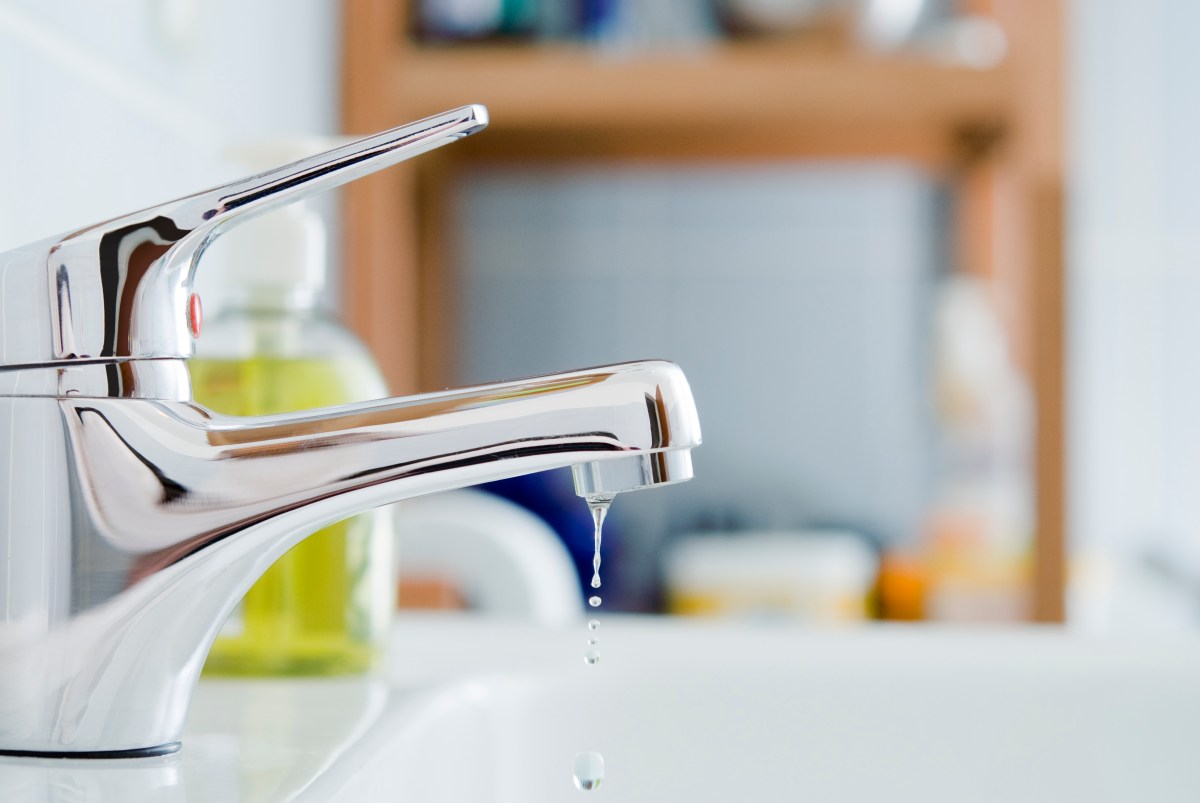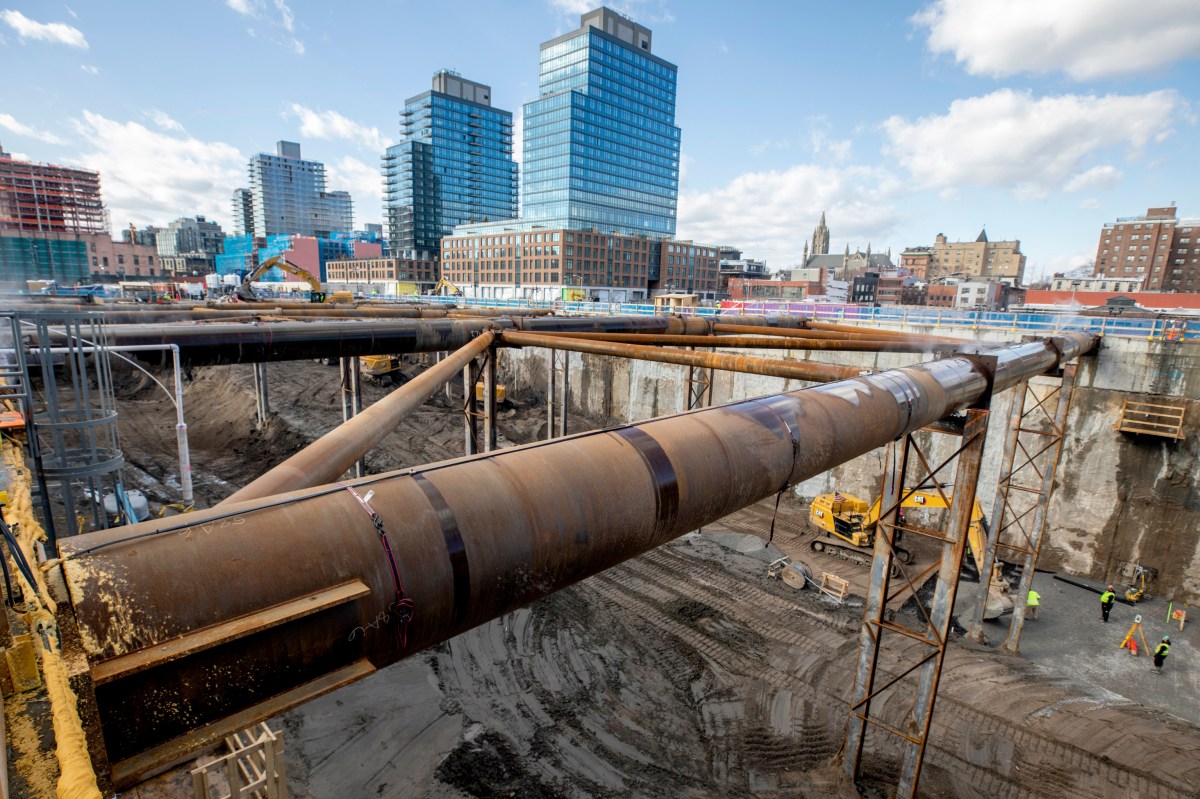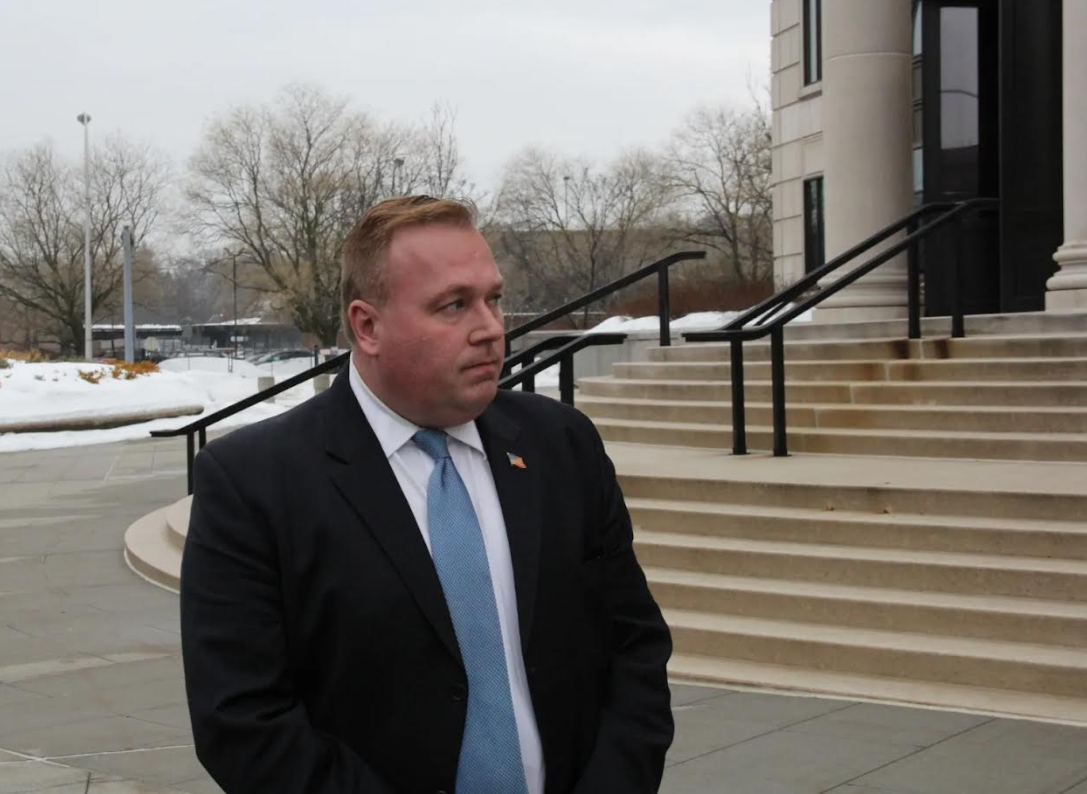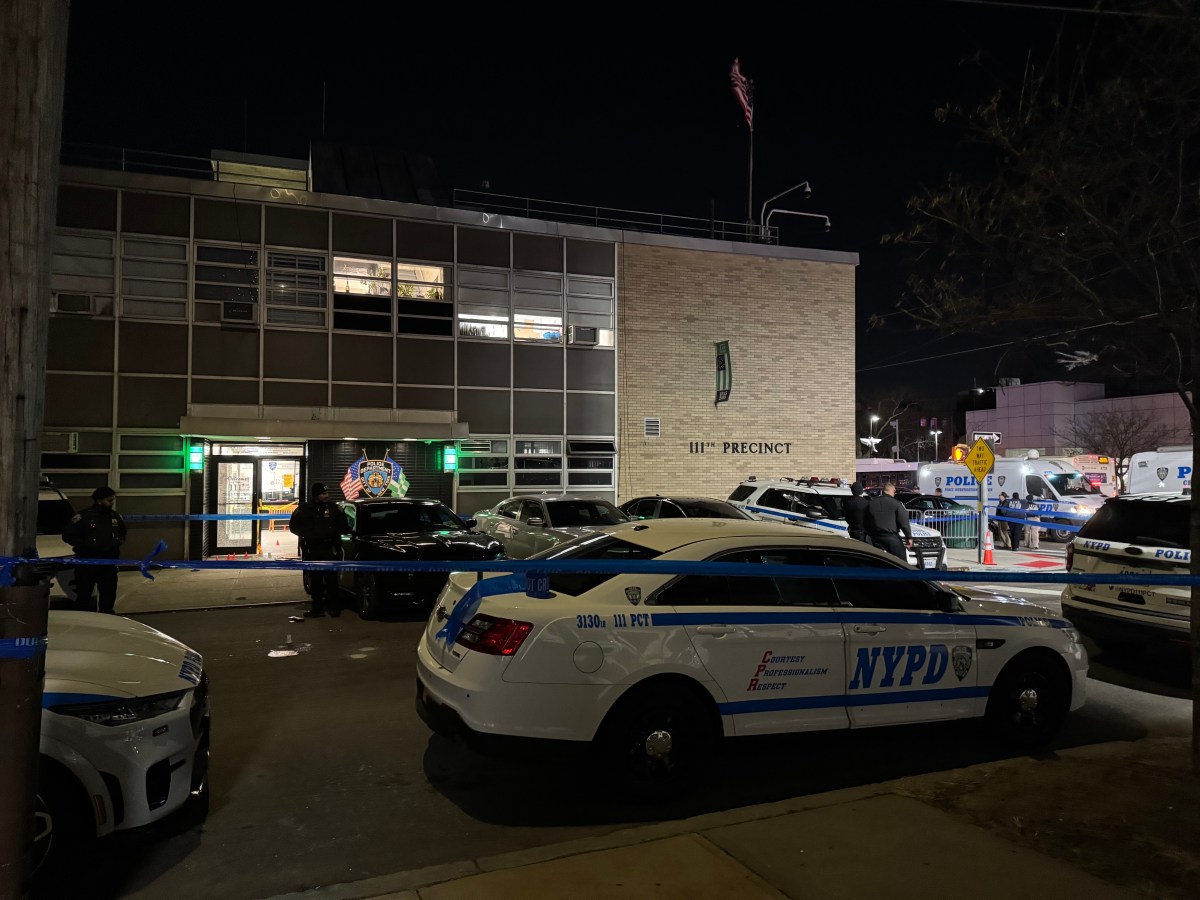City Hall declared a drought watch in the five boroughs Saturday after a historically dry October, during which there was almost no measurable rainfall in New York City.
Mayor Eric Adams and Department of Environmental Protection (DEP) Commissioner Rohit Aggarwala issued the drought watch notice, with all city agencies being ordered to update their water conservation plans to slow the depletion of the city’s upstate reservoirs.
October 2024 was the driest month in New York City since 1869, when weather records started being kept in Central Park. Just a hundredth of an inch of rain was recorded in Central Park during the month, far below the October normal of 4.38 inches.
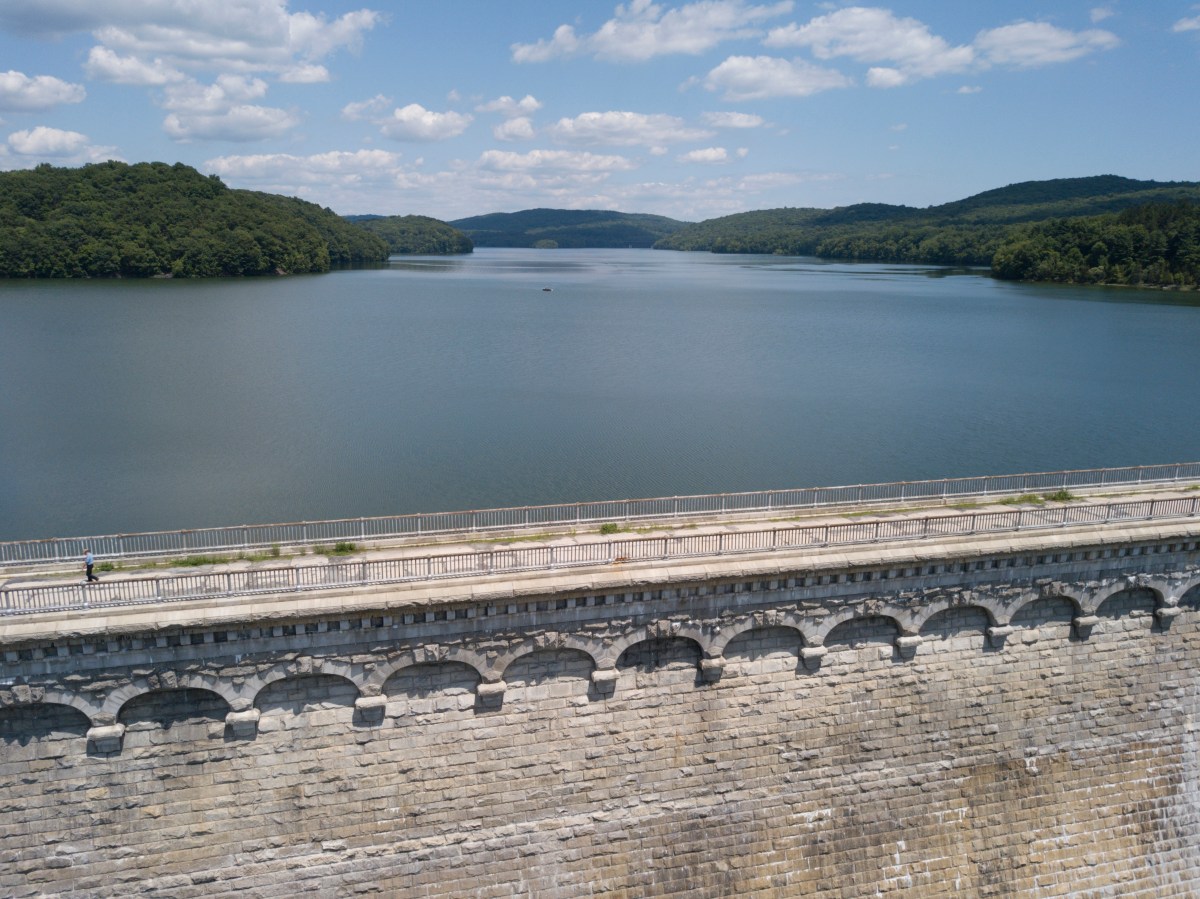
Besides being dry, October 2024 was also very warm, with a mean temperature of 60.9 degrees, three degrees above normal. The arid and warmer conditions left the ground parched, leading to repeated red flag warnings from the National Weather Service for an elevated risk of brush fires.
The greater concern for the city is keeping the upstate reservoirs from receding. Last month, just 0.81 inches of rain fell in the Croton Watershed, the city’s oldest upstate water supply, three inches below normal; that followed up on a slightly wetter September in which just 1.36 inches of rain fell in the watershed, about 3 1/2 inches below normal rainfall totals.
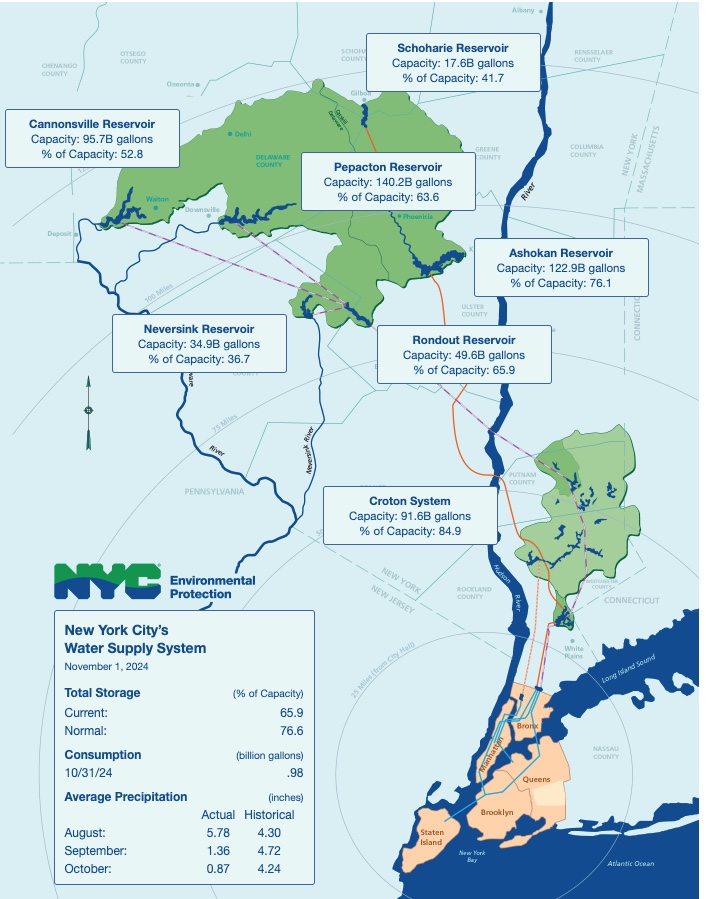
As of Nov. 1, the DEP reported that the city’s water supply is at about 65.9% capacity, down from the 76.6% normal level. On average, New York City residents and business use about 1.1 billion gallons of water, and under 1 billion gallons per day during winter months.
With that in mind, Mayor Adams said the time has come for all 8.3 million New Yorkers to start conserving water now to prevent the drought from growing worse.
“New Yorkers come together in times of crisis, and right now, amidst the dryest spell in recent memory, we need New Yorkers to do just that and conserve as much water as possible,” said Mayor Adams. “By starting to save water now, we’re doing everything we can to make sure that we can water our parks and fill our pools come summer, and to stave off a more serious drought emergency.”
The city offered these tips to help conserve water:
- Take shorter showers; doing so saves 5 to 7 gallons of water per minute. If you’re taking a bath, fill the tub only halfway; that will save between 10 and 15 gallons.
- Don’t run the tap while shaving, washing hands or brushing teeth. That will save between 2 and 3 gallons of water per minute.
- Don’t flush the toilet unless you have to; toilets account for about 30% of a home’s water consumption, and each flush uses about 1.6 gallons.
- Look for leaky faucets and fix them.
- Run dishwashers and washing machines when they are at full capacity; use short cycles if available. If you wash dishes in the kitchen sink, turn off the water while doing so.
- Use low-flow toilets and showerheads, and faucet aerators, to further conserve water.
- Instead of hosing down a sidewalk or driveway, sweep them with a broom.
For more information and water conservation tips, visit nyc.gov/dep.



